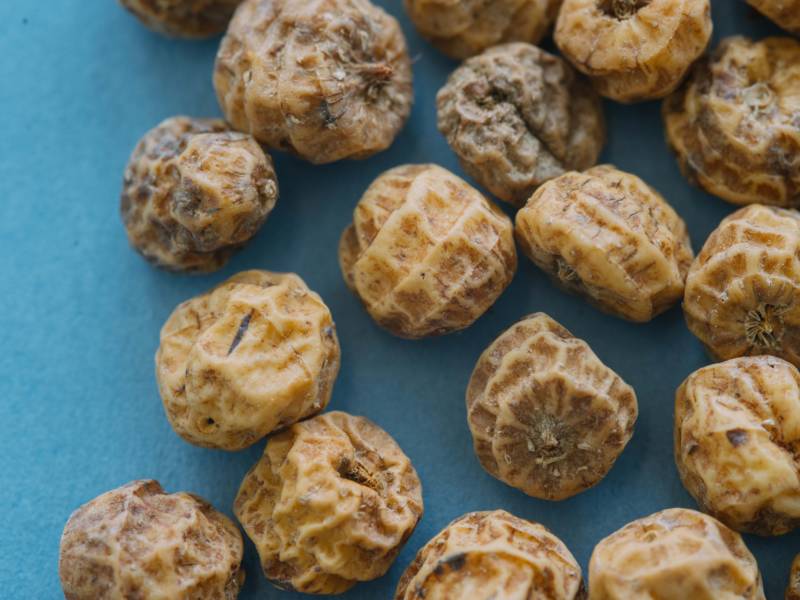
What records remain from antiquity suggest that tiger nuts were used medicinally and eaten as treats. The roasted, crushed tubers were eaten with honey, according to work by Moshe Negbi, a former botanist at the Hebrew University of Jerusalem. Theophrastus, an ancient Greek botanist, wrote about boiled, sweet tiger nuts in Historia Plantarus. By the 13th century, records from present-day Valencia, Spain, show that tubers were being used to create a drink called horchata de chufa, "an ancestor of the horchata drunk nowadays," according to researchers at the Polytechnic University of Valencia.
But yellow nutsedge's reputation as a valued crop began turning in the 19th century. In the Manual of the Botany of Northern United States 6th ed., author Asa Gray wrote in 1889 that the plant was "becoming a pest in cultivated ground."
There doesn't seem to be any record that ancient people saw yellow nutsedge as a weed, but it's certainly far better at destroying crops than being one, according to Michael Defelice, a retired weed scientist who's written about the plant. In agricultural fields, yellow nutsedge can grow quickly and shade over other crops.
"The plant just chokes up everything around it. It's really hard to kill," Defelice says. It's considered a noxious weed or pest almost everywhere it's found in the world, including its native range in Africa.
And tiger nut has never really enjoyed widespread popularity or fame in the same way other ancient Egyptian crops, like barley or emmer wheat, have. Defelice says that's because it's just not economical.
"It's not a great volume producer. You wouldn't get a lot of food per acre. That's why it remained a niche product," he says. "In Egypt, there weren't lots of options in those ancient times. So they worked with what they had. I think a really telling feature is that they coated them in honey."
People enjoy the taste, though. Presumably, people continued cultivating and eating tiger nuts all these thousands of years. They're still eaten in parts of Africa, and horchata de chufa is still a refreshing treat in Valencia. Granola, smoothies and flours can all be made with tiger nuts as well. These are all being sold as part of an attempted tiger nut renaissance in the health food industry.
It doesn't taste terrible. When we tried them at NPR, the greatest endorsement a staff member had for the dried, raw tiger nuts was a thoughtful, chewed over "alright." The tuber has a light almond taste and smell, with a surprising crunch after being rehydrated. After a few seconds of hard chewing, the tiger nut falls apart into what feels like the frayed end of a rope in your mouth. It is extremely fibrous.
On the nutrition front, it does OK. Tiger nut has a mix of mostly unsaturated oils, like avocado oil. "The tiger nut is between the tuber and the nut [in terms of nutrition]," says José Ángel Pérez Alvarez, a researcher at Miguel Hernandez University of Elche in Spain who studies tiger nuts. For instance, there's less protein than a typical nut but more than the typical tuber. There's more starch than the typical nut but less than the typical tuber.
Why or how health food companies seized on tiger nuts is somewhat unclear. Some scientists believe that certain pre-human hominids ate them as a part of their diet 2 million years ago, particularly because modern baboons seem to enjoy them. That may have spurred popularity among paleo dieters. It's not really a "superfood." But if you like the taste of faintly sweet, nutty things and making your jaws work for a snack, this might be the thing for you.
Copyright 2016 NPR.

